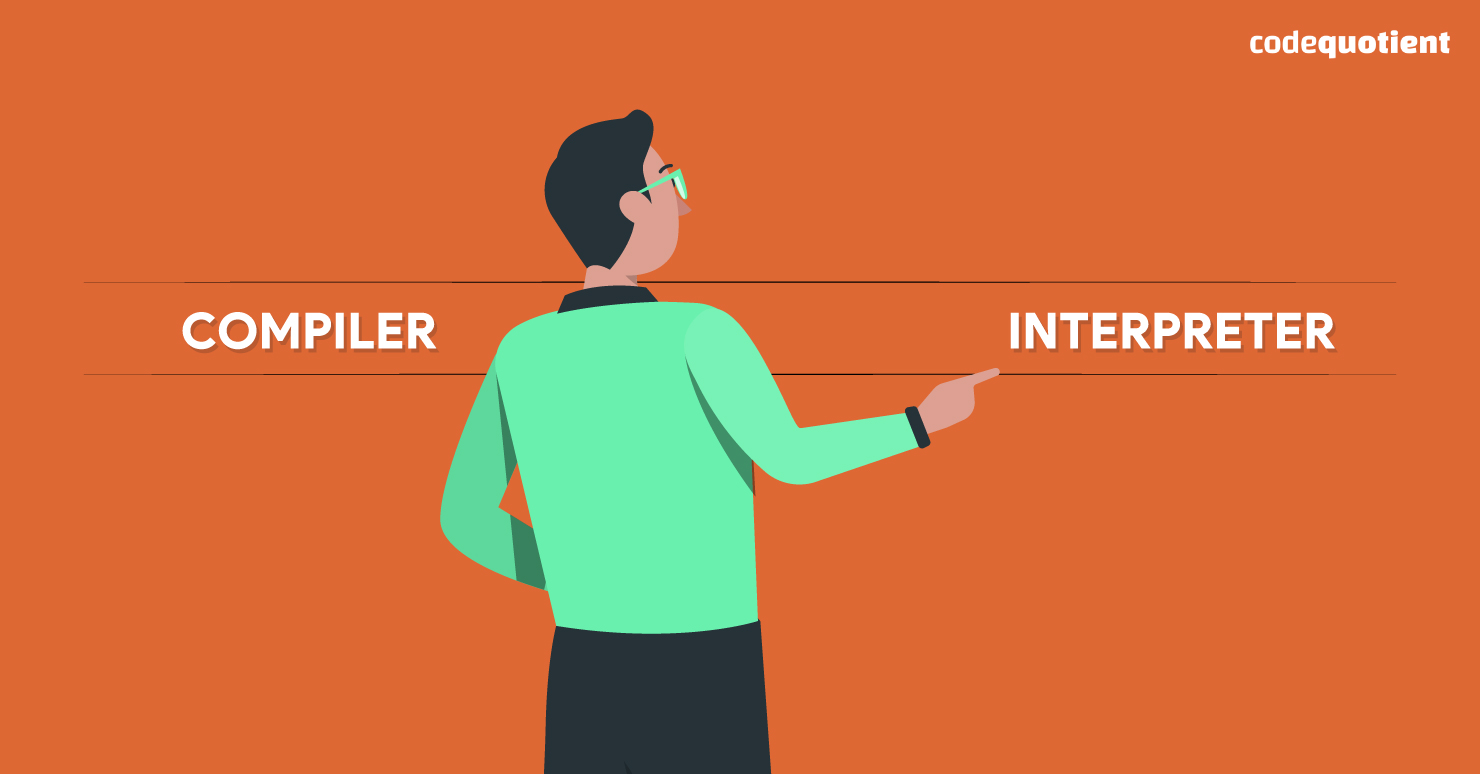For an aspiring developer or an all-coding-and-tech student, compiler and interpreter are the diving platforms to go deep into programming. But these two are often the point of confusion and thus interviewers’ favourites. So, here we are, to break them up and set them apart, so you can easily ace through those tests and interviews.
Let’s start with the core. A high-level language is typically used to write a computer program. High-level languages are those that we, as humans, can understand. A code or a set of instructions written in such computer programming languages, comprehensible to humans, is referred to as a source code.
A computer, on the other hand, does not understand high-level languages. It only understands machine code, which is a binary program written in 0s and 1s.
Thus, a compiler or interpreter converts source code into machine code. However, there are distinctions between how an interpreter and a compiler operate. Let’s examine them in detail.
What is a Compiler?
A compiler is a program that takes a high-level language as input and outputs a low-level language (such as assembly or machine code). It is essentially a computer program that converts programming language code into machine code (human-readable code converted to a binary 0 and 1-bit language for a computer processor to understand). The computer then executes the machine code to complete the task.
Key Points:
- Compilers check all types of errors, limits, and ranges.
- It takes longer to run and also requires more memory.
What is an Interpreter?
It is a program that converts a high-level programming language into something that can be understood by the computer. It’s a type of software that converts high-level program statements, including pre-compiled code, source code, and scripts, into machine code.
Key Points:
- Only one statement of the program is translated at a time by an interpreter.
- An interpreter does not generate an intermediary code. As a result, an interpreter is particularly efficient with respect to memory usage.
Let’s Look at Compiler vs Interpreter in Detail

Here, let’s discuss some of the major differences between a compiler and an interpreter:
1. Programming Steps for Compiler vs Interpreter
Here are the steps:
Compiler:
- Make a source code program.
- The compiler examines your program statements and verifies that they are correct. When a program detects an error, it displays an error message.
- If there are no errors in the program, the compiler will convert the source code to machine code.
- The compiler combines all of the code files into a single executable program (.exe file).
- Finally, it executes the program and produces results.
Interpreter:
- Make a source code program.
- There will be no file linking or separate machine code generation.
- During execution, the source code programming statements are executed line by line. If it detects an error in any statement, further execution is halted until the error is corrected.
2. Translation Type
A compiler converts entire high-level programming code into machine code in a single step, whereas an interpreter converts one statement of programming code into machine code at a time.
3. Running Type
The analysis of source code by a compiler takes a long time. However, compiled programming code is faster than an interpreted one.
An interpreter takes less time to analyse source code than a compiler. However, interpreted programming code is slower in general since it has to read, analyse, and execute the program together at runtime for every statement.
4. Program Generation
The compiler produces a program (in the form of a .exe file) that can be run independently of the source code.
An interpreter does not generate an output program. As a result, the interpreter evaluates the source program as it is executed.
5. Execution
A program’s execution occurs independently from its compilation. It occurs only after the entire program has been compiled.
Because program execution is a step in the interpretation process, it is carried out line by line.
6. Memory Requirement
A compiled program is converted into intermediate object code, which then needs to be linked. As a result, more memory is required.
The interpreter exists in the memory during interpretation. As a result, additional memory is not required.
7. Error Execution
At program compilation time, all errors and warning messages are displayed. The program cannot be run until each error has been corrected. Compiling a program complicates the debugging process: one must correct every error before moving on to the next step in programming.
Interpreters read a program line by line, highlighting any errors that are found on that line. To interpret the next one, you must correct the error and then repeat this process.
Wrapping Up:
Some programming languages, such as Java, are both compiled and interpreted to take the relative advantages of compilers and interpreters. Object Code is created by compiling Java code. The JVM, a software-based interpreter, translates Object code into machine code for the target computer at runtime.
Check out CodeQuotient’s blog to get more information about coding and programming.
Through our CodeQuotient School of Technology’s Software Engineering Bootcamp, we also enable students with internships from reputable universities to tackle real-world industry challenges. Get in touch with us today!




